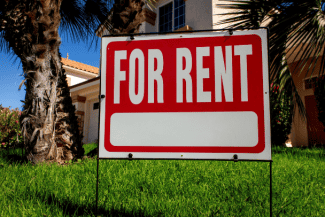How Long Can a Building Owner or Landlord Depreciate a Leasehold Improvement?
 A leasehold improvement is a change made to a rental property to customize it for the particular needs of a tenant. Leasehold improvements, such as painting, installing partitions, changing the flooring, or putting in customized light fixtures can be undertaken either by the landlords—who may offer to do so to increase the marketability of their rental units—or by the tenants themselves.
A leasehold improvement is a change made to a rental property to customize it for the particular needs of a tenant. Leasehold improvements, such as painting, installing partitions, changing the flooring, or putting in customized light fixtures can be undertaken either by the landlords—who may offer to do so to increase the marketability of their rental units—or by the tenants themselves.
While the useful economic life of most leasehold improvements is five to 15 years, the Internal Revenue Code requires that depreciation for such improvements to occur over the economic life of the building.
Leasehold improvements have different depreciation rules depending on whether you are working with U.S. tax basis financial reporting or the U.S. generally accepted accounting principles (GAAP) financial reporting. For tax purposes, leasehold improvements are eligible to be depreciated for periods of up to 15 years.
KEY TAKEAWAYS
- A leasehold improvement is a change made to a rental property to customize it for the particular needs of a tenant.
- The IRS does not allow deductions for leasehold improvements. But because improvements are considered part of the building, they are subject to depreciation.
- Under GAAP, leasehold improvement depreciation should follow a 15-year schedule, which must be re-evaluated each year based on its useful economic life.
Understanding Leasehold Improvements
Leasehold improvements are also known as tenant improvements or build-outs and are generally made by landlords of commercial properties. Landlords may provide these improvements for existing or new tenants. The modifications are tailored to suit the needs of a specific tenant and their needs. Only improvements made to the interior of a specific tenant’s space are considered leasehold improvements.
Leasehold improvements, as noted above, apply to structural changes in the space that will benefit a specific tenant. So making changes to one tenant’s space does not qualify as a leasehold improvement to the neighbor.
Changes to the exterior of a building or its landscape also don’t apply. If a landlord replaces the roof of the building, upgrades the elevator, or paves the parking lot—none of these changes are considered leasehold improvements, as they don’t benefit a specific tenant.
Once the lease ends, the improvements generally belong to the landlord, unless otherwise specified in the agreement. If the tenant is able to take them, they must remove them without any damage to the property.
GAAP Financial Reporting
For GAAP financial reporting, improvements to leaseholds can be capitalized or expensed depending on the dollar amount of the improvement. Companies set a capitalization limit, an internal accounting standard determined by management that sets the threshold amount above which an item is capitalized instead of expensed.
If the amount does not exceed the capitalization limit, the leasehold improvement is expensed in the period in which it is incurred. If, however, the cost exceeds the capitalization limit, the company capitalizes and amortizes it.
A capitalized leasehold improvement under GAAP is amortized over the lesser of the remaining useful life or the remaining term of the lease. Useful life is determined based on management estimates.
Additionally, the remaining term of the lease can include extensions so long as they are foreseeable and reasonably assured of happening. If the building is subsequently purchased, the lease ceases to be in effect, and the leasehold improvement would be amortized over the remaining useful life of the building.
U.S. Tax Basis Financial Reporting
The 15-year rule was enacted by the Internal Revenue Service (IRS) in 2004. Prior to that year, the depreciation term was 39 years. The 15-year rule is not permanent and must be reauthorized every year.
The depreciation term is fixed regardless of the actual useful life of the leasehold improvement or the remaining term of the lease.
Source: Investopedia















 Accessibility
Accessibility